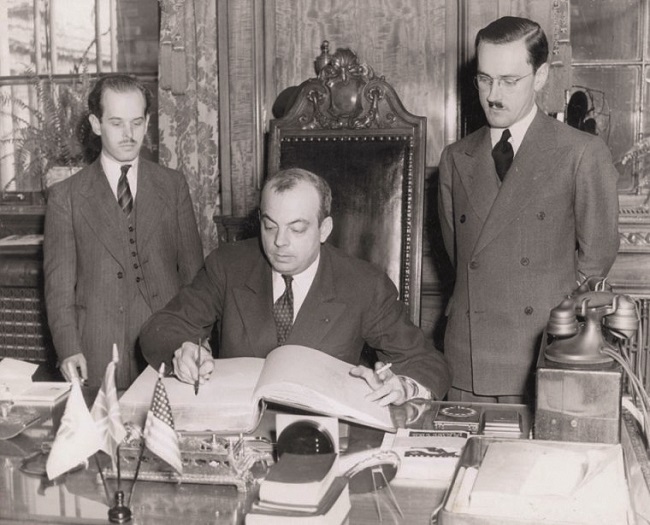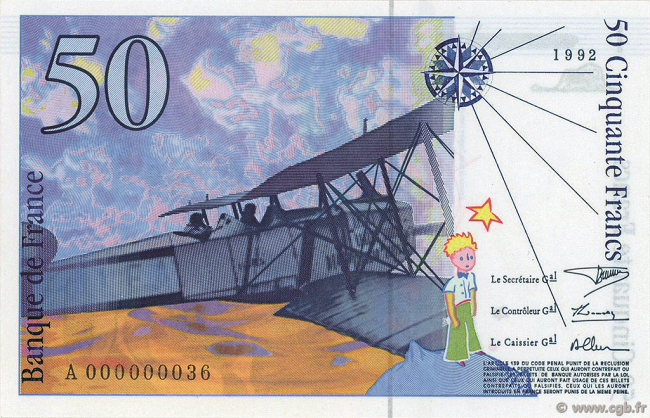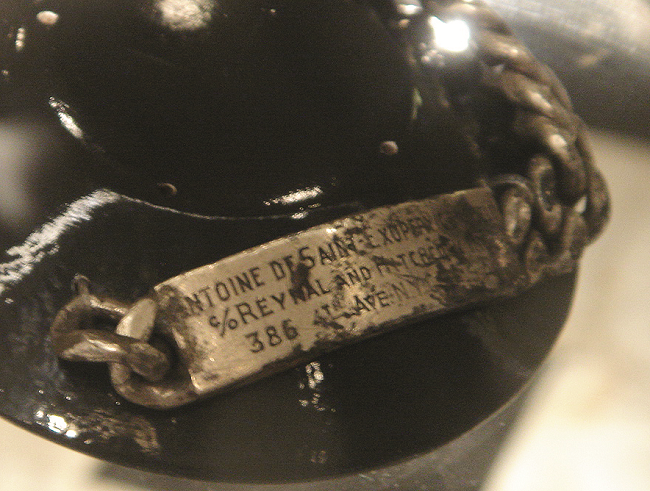Icons of France: Antoine de Saint-Exupéry

As 2023 marks the 80th anniversary of The Little Prince’s publication, discover the complex character behind this classic children’s book, and a life story every bit as extraordinary.
Désolé, dear reader, but to call yourself a true Francophile you have to know about Antoine de Saint-Exupéry. Not only was he the author of one of the most popular books ever written, but he was also a pioneering aviator and one of life’s great adventurers, the circumstances of whose death remain a mystery.
‘Saint-Ex’, as he was known to friends and colleagues, was born into an aristocratic Catholic family in Lyon on June 29, 1900. Despite losing his father from a stroke before the age of four and his 15-year-old brother from rheumatic fever when he was 17, he enjoyed a happy childhood. Much of this was spent at the nearby Château de Saint-Maurice-de-Rémens (in the Ain département), owned by his great-aunt.
Like many children of his generation, Saint-Exupéry was fascinated by aviation – he designed a flying bicycle as a child, and took his first flight in 1912. But there were several twists and turns before his own career got off the ground. Having performed poorly at school, he failed the entrance to the École Navale twice, then left the École des Beaux-Arts without graduating. Afterwards, he led a bohemian lifestyle in Paris, relying on his maman for financial support. But in 1921 he was conscripted into the French army, enabling him to take flying lessons and qualify as a pilote de France.

Off to a flying start
Switching to the booming world of commercial aviation a few years later, he joined the Compagnie Générale d’Entreprises Aéronautiques (later to become Aéropostale), flying mail from Toulouse to Dakar in colonial West Africa. However, this proved far more dangerous than he’d anticipated: although technologically advanced for their time, the aircraft he and his colleagues flew were prone to crashes – Saint-Exupéry had several over the years. They also had an open cockpit, exposing pilots to the elements, to say nothing of the dodgy maps they were often provided with, and the pot shots taken by desert dwellers below.
These extraordinary experiences resulted in the captivating memoir, Terre des hommes (Wind, Sand and Stars, 1939). This followed Vol de Nuit (Night Flight, 1931), a fictionalisation of his aviation exploits in Argentina, which won the prestigious Prix Femina.
At the outbreak of the Second World War, he joined the French Air Force, flying reconnaissance missions. Following German Occupation in 1940, he was demobilised and headed to the States in a bid to encourage American involvement in the war. It was here that he wrote his most famous book, Le Petit Prince (The Little Prince, 1943). While some have dismissed the novella, about the strange encounter between a stranded pilot and an intergalactic prince, as “nauseating whimsy” and “faux philosophy”, there’s no arguing with its popularity. It sold over 200 million copies worldwide, making it the most popular work of fiction ever penned by a French writer.

© Yaroslav Blanter
The lost child
Psychologically, though, its author appears to be something of a paradox. As an adventurer, he took to the skies fearlessly and loved nothing more than to explore the world. Yet his writings reveal another side to his character.
In her introduction to the 2015 English translation of Le Petit Prince, bestselling author Kate Mosse says Saint-Exupéry wrote “to make sense of his sadness and alienation”. She also claims he “was talking as much to his young self – and the lost child in all of us – as well as to his young readers”. Above all, though, she believes the book is a magical fable which transcends cultural barriers and expresses timeless truths.
There is also no doubting France’s love for its famous son. As well as numerous other literary awards, Saint-Exupéry was bestowed with the Légion d’honneur for his heroism, and commemorated in the Panthéon in Paris. In his birthplace of Lyon, the airport was renamed after him.

Saint-Exupéry returned to the war in April 1943, flying with the Free French Air Force. On the morning of July 31, 1944, he took off from Corsica in his P-38 Lightning on a reconnaissance mission, in preparation for the Allied landing in Provence on August 15. And that was the last anyone saw of him.
Remarkably, in 1998 a fisherman found an identity bracelet bearing his name in the sea near Marseille. Then, in 2000, some wreckage from the plane was discovered nearby. There were no bullet holes, leading to speculation that he had either committed suicide, or suffered a fatal crash, with his nine lives used up.
In her biography of ‘Saint-Ex’, Stacy Schiff says he “did not so much live fast as die early, and our fascination with him has grown as a result, as it does with all things that end before their time”.
For Little Prince fans across the planet, Antoine de Saint-Exupéry’s star will always shine brightly.
From France Today magazine

Saint Exupéry’s identity bracelet
Lead photo credit : Saint-Exupéry at the Hôtel de Ville in Montréal
Share to: Facebook Twitter LinkedIn Email
More in French history, french literature, Le Petit Prince
Leave a reply
Your email address will not be published. Required fields are marked *




REPLY
REPLY